Cyberpunk 2077 on PS5/Xbox Series X|S: a night and day improvement over last-gen consoles?
Performance and image quality tested.
It's no secret that Cyberpunk 2077 has launched in a bit of a state on the last generation consoles - with the base PlayStation 4 and Xbox One in particular suffering from exceptionally poor performance. We will have the full story on how all the last-gen systems compare soon, but for owners of PlayStation 5 and Xbox Series consoles, the story is somewhat more positive. Despite leaning on backwards compatibility - and not specifically addressing the capabilities of the new hardware - it's clear that next-gen offers the core technological building blocks to provide a much more solid experience. And while we've not looked at it in too much depth yet, the outlook on Stadia is much brighter too.
The key to Cyberpunk 2077's huge improvement on the new wave of machines isn't just down to teraflops as such - it's more the combination of new technologies provided. On this page, you'll see a video detailing our first impressions of the PlayStation 4 and PS4 Pro versions of the game and it seems as if there are two key technological weaknesses that fundamentally impact the experience: the lack of CPU horsepower, plus slow storage. Graphics performance is also a key component, but mitigating measure can (and have) been taken here. Solid state storage and CPU power seem to be the key components here, demonstrated by Xbox Series S - the junior-level next-gen console that easily provides a level of performance that exceeds its 4TF GPU counterpart, PlayStation 4 Pro.
What's intrigued me about Cyberpunk's presentation on the next generation machines is that while backwards compatibility is the focus, what we aren't getting is straight playback of the PS4/Xbox One games. The code is aware that it is running on more advanced hardware and changes its outlook accordingly. PlayStation 5 appears to have the simplest implementation - the game seems to have the same 1188p maximum dynamic resolution output as PlayStation 4 Pro (which actually seems to operate in a 972p-1188p DRS window) but the 30fps cap on last-gen is totally removed. The end result is something very close to a locked 60 frames per second through much of the game, with only minor drops in most scenarios. However, it's not a lock - driving at speed through the city seems to hit a CPU limit with drops into the 50s.
Xbox Series X also offers more than just backwards compatibility. While it does seem to share a bunch of features from the Xbox One X version of the game, it gains the ability to choose between quality and performance modes - a choice you don't have on One X. Performance mode locks to 1080p and runs with an unlocked frame-rate up to 60 frames per second, but curiously, it cannot match PlayStation 5's raw output. In like-for-like tests, it does drop lower while areas that do not have any slowdown at all on PS5 can have some minor issues on Series X. However, city density in terms of NPC and vehicle count sees Series X clearly running with higher settings - it's not a like-for-like comparison.
Arguably the best console experience right now is Series X's quality mode, which caps output frame-rate to 30 frames per second but increases resolution dramatically - it's dynamic and floats around 1512p in the city, but can be reach beyond 1728p in simpler scenes (1800p looks like the absolute upper bounds). Latency increases and obviously visual response is lower, but increasing the pixel count so dramatically is a boon for image quality. Cyberpunk 2077 uses temporal super-sampling heavily, meaning that information in the current frame is derived from past frames too. The higher the resolution of the previous frames, the higher the compound gain in the current frame - the end result is a much more attractive, less grainy and blurry game. There are further enhancements too, such as ambient occlusion, which is not present in performance mode, nor is it present in the PS5 build.
Ultimately, there's an interesting choice with the two next generation machines: PlayStation 5 offers the better experience if frame-rate is the primary focus, where Xbox Series X does fall a little short (a variable refresh rate display does work wonders, however). Meanwhile, if you're happy with 30 frames per second, the premium Xbox offers the best visual quality by quite some margin along with additional graphical effects and vehicle/NPC density. Quite why both consoles don't get the same features may well come down to how backwards compatibility is implemented by the platform holders. We know that Xbox allows for new Xbox One games to be 'aware' that they are running on Series consoles, opening the door to further console-exclusive features. It's not entirely clear what options are available on the PlayStation side - the unlocked frame-rate here looks similar to the kind of feature that's been added to Sony's own Ghost of Tsushima when run on PS5 hardware.
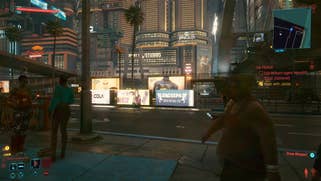
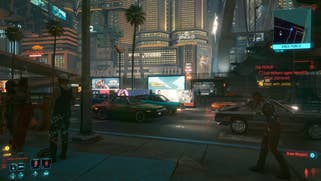






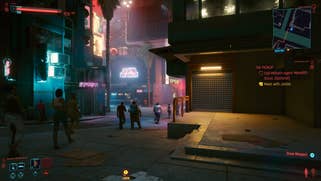
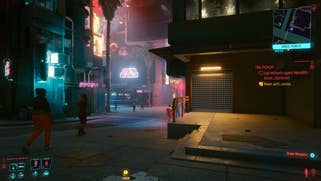
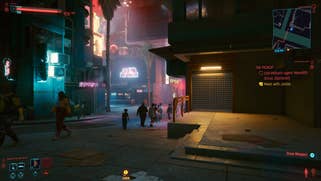
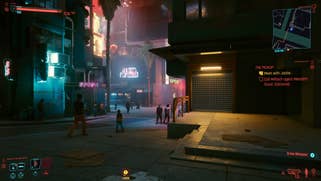












All of which leaves us with Xbox Series S - and a fascinating state of affairs. On every other title we've tested so far, Series S runs Xbox One games using the Xbox One S code path - so if a game tops out at 900p at 30fps, for example, that's the best you're going to get on Series S, even if the hardware is capable of so much more. With that in mind, our hopes weren't high when we sat down to play Cyberpunk on Microsoft's value-driven console, particularly as it looks like One S tops out with a rendering resolution of just 1440x810. However, the good news is that while very much tapping into last-gen quality and performance profiles, Series S get its own bespoke implementation.
In effect, Series S works as a tweaked version of Series X's quality mode. Resolution is clearly much, much lower - it can run beneath 1080p. However, the resolution bounds also increases beyond PS5's best, reaching around 1296p. More to the point, it retains most - if not all - of the quality mode advantages, meaning that you get the higher vehicle count and crowd density, plus features like ambient occlusion. It's still a somewhat blurry and grainy presentation overall though, a situation that is offset partially by the fact that frame-rates are good overall. There's no performance mode here - it's 30fps for the most part - and that sheer level of consistency goes a long way in delivering a much more solid experience.
In fact, Series S at 30fps seems to be a touch more consistent overall than Series X but the key takeaway here is that in terms of PlayStation and Xbox consoles - and even PC - it's difficult to imagine hardware that could deliver a Cyberpunk experience as decent as this for anything like the same money. Whether it's Xbox or PlayStation, it's clear that any flavour of last-gen console is too hamstrung by CPU and storage hardware limits to deliver 30fps throughout. There are some small bizarre drops on Series S, but based on what we've seen so far, they do seem to be fleeting and do not impact the experience.
The idea of a 'cheap machine that can play Cyberpunk competently' did get me thinking though - because the game is available on a cloud system, namely Google's Stadia. The plan was to finish our console work and circle back to see how the game streamed later on, but the fact is that you can access Stadia now without buying into subscriptions or hardware - on the UK store, the game costs £49.99 and so that's your flat cost for play. I gave it a shot on a 35mbps fibre connection, which previously did not play nicely with Stadia, but I actually came away reasonably impressed. First of all, my connection is now rated as 'Excellent' or at worst 'good', which did not happen in the Stadia review period (necessitating actual testing to be carried out elsewhere). Secondly, CD Projekt Red has tasked developer QLOC with the port and it's actually pretty good.
We will take a closer look at this in due course - I've only played on my laptop for around an hour - but I can tell you that 60fps is served as the default, and that it runs fairly consistently at this update until you reach the city, where driving in particular has noticeable stutter. Similar to Series X, high frame-rate and 30fps quality modes are available. The port appears to be feature-complete too based on what I've seen so far, the only omission being the film grain option (which is simply not compatible with streaming systems for a whole host of reasons). These are only first impressions but they are positive, and Cyberpunk 2077 on Stadia is obviously running at a far higher performance level than any last-gen version. While the 60fps mode may not be locked, it does have advantages in terms of lower latency - key to a cloud gaming system. CD Projekt Red's latest may disappoint on last-gen consoles but at least there are other options - and Stadia may not be the complete solution but even with the disadvantages of a streaming platform, I'd sooner play it here than on any PS4 or Xbox One.
There's more to come from Digital Foundry on Cyberpunk 2077 - we're almost there on our last-gen console tests and we are finalising our PC analysis and suggested settings, the idea there being to claw back as much performance as possible while retaining the lion's share of the game's next-gen visuals. However, what's clear is that this is the first third-party game we've seen that draws a line between the generations, to the point where we do wonder if Xbox One and PlayStation 4 versions should have shipped at all. When you see what PC is capable of delivering alongside its steep hardware requirements, the idea of whether the last-gen console versions are 'optimised' or not gives way to discussion on whether a decent port is actually possible at all. We encountered many bugs during our playtest and those can be corrected, but right now it does seem as if the code runs head-first into technological limitations that look almost impossible to work around.
In the here and now, while next-gen consoles may not have their own bespoke versions of the game, they do at least provide the necessary tech to deliver a playable experience - and it'll be fascinating to see how much of the PC experience makes its way to PlayStation 5 and Xbox Series consoles when the enhanced version of the game arrives some time in 2021.










